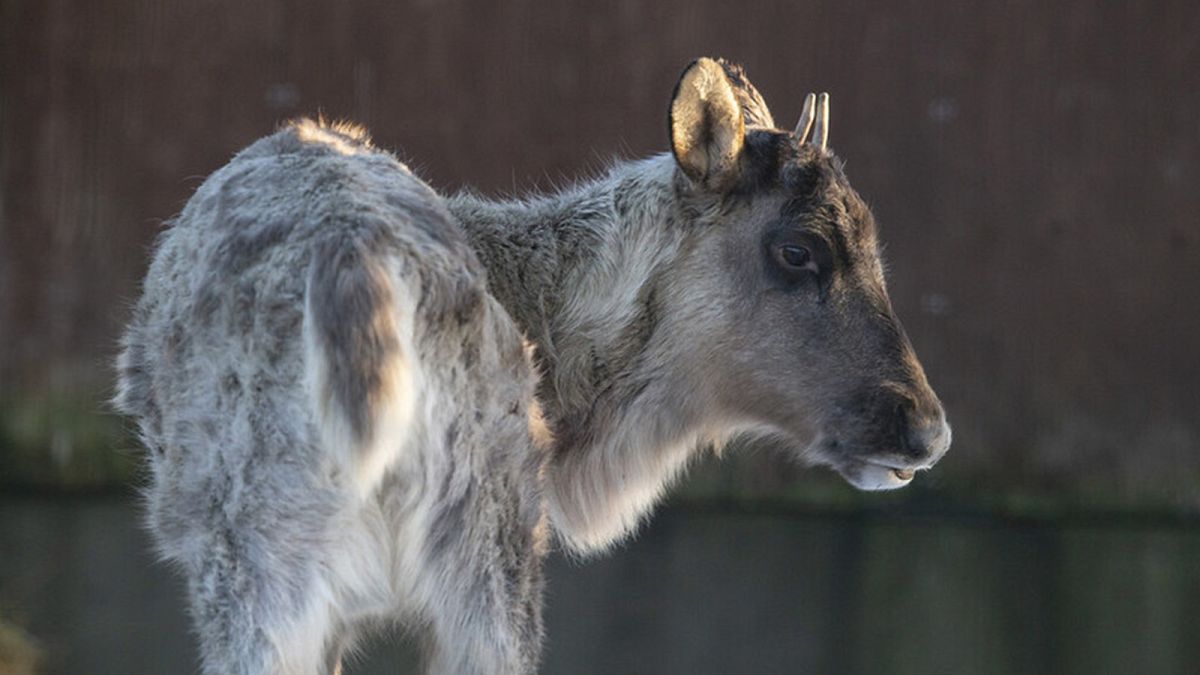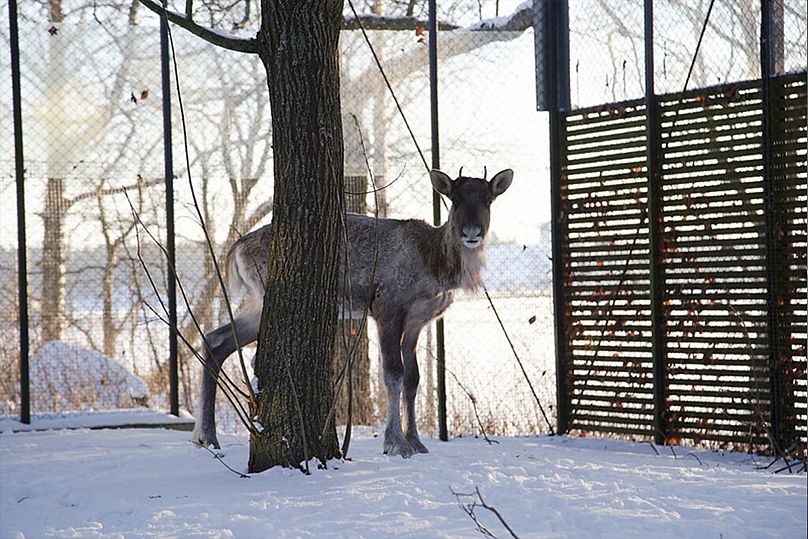A DNA test of a young reindeer spotted on the streets of the Finnish capital -- an unusual occurrence in itself -- shows the visitor is even more rare than originally thought.
A DNA test on a mysterious visitor to Helsinki has revealed he's even more rare than first thought.
Earlier in January, a young reindeer was spotted on the streets of the Finnish capital -- an unusual occurrence considering the distance between the city and the nearest wild population more than 200km away.
The animal was captured by police and taken to the zoo for veterinary treatment. Now, DNA tests carried out at Helsinki University's DNA Sequencing and Genomics Laboratory have revealed it is in fact a rare forest reindeer -- Rangifer tarandus fennicus -- rather than the more common, semi-domesticated reindeer farmed in large herds in Lapland.
The zoo's Director of Conservation Nina Trontti tells Euronews they still have no idea how the rare reindeer found his way to the capital city.
“There’s some speculation about the route he took, and a few people took pictures of him when he was coming towards the city. There are geographical features, patches of forests, that could lead him south” she says.
“But this is a really unique situation to find a reindeer in Helsinki.”
The animal has been recovering for the past two weeks in the wildlife hospital at Helsinki's Korkeasaari Zoo. Keepers think he's less than a year old, and would have already been weaned from his mother, but was quite malnourished when he was spotted on suburban streets.
Endangered species in the wild
Forest reindeer are an endangered species with only around 4,000 animals left in the wild. The population is spread between Finland and Russian Karelia.
The reindeer were hunted to extinction in Finland in the early 20th century but gradually returned over the eastern border between the 1950s and 1970s.
During most of the year, small herds will roam together, but when calves are born the females move to more swampy areas where there are abundant food sources and protection from predators like wolves and bears.
Initially, keepers at the zoo worried that the animal might be prone to a condition called 'capture myopathy' where the trauma of being taken captive can cause serious stress injuries, damage to internal organs or even death, but Trontti says they believe he is now out of danger and on the road to recovery.
“Now he’s doing fine. He eats a lot and sleeps a lot just like a normal forest reindeer, he’s feeling fine.”
In the longer term, the plan is to reintroduce the forest reindeer to a managed breeding and restoration project which has been running for the past five years.
When the managed population reaches a sustainable number they'll be released back into the wild.

